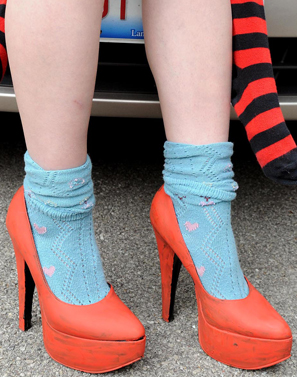I pledge allegiance...

|
Early American citizenship was about more than formally separating from England, argued Stanford professor and president emeritus Gerhard Casper Thursday at the Law School’s annual Fulton Lecture in legal history. Rather it represented “a renunciation of the old monarchical world in favor of a new order.”
In his lecture, “Forswearing Allegiance,” former Law School Dean and University Provost Casper discussed the complicated history of American immigration law and concepts of citizenship. The Founding Fathers were anxious about incorporating European immigrants, long the subjects of sovereigns, into the republic. While Thomas Jefferson, for instance, “had a dim view of integrating” foreigners, Casper said, pamphleteer Thomas Paine “believed democratic principles of American government [would] take care of heterogeneity.” Consequently, for more than 200 years naturalization laws have required new citizens to “renounce forever all allegiance and fidelity to any foreign prince, potentate, state or sovereignty.” Such requirements, Casper noted, no longer make sense in an age of increasing cosmopolitanism, globally shared values, and dual citizenship.
In a question-and-answer session, Casper remarked that his talk had a crucial autobiographical component. Born in Germany in 1937, Casper came to the United States in 1964. He waited many years to change his citizenship, not for lack of feelings for America, he said, but “because Germans of my generation have such a difficult time with national identity.” They “identify as citizens of the world…not detained by national elements.” Casper naturalized in 1979, when he became dean of what he called one of the country's "premier legal institutions.”
Ethan Frenchman, '08
Photo: Former Law School Dean and Provost Gerhard Casper addresses friends, former students, and the curious in the Law School's Kirkland Courtroom.





















